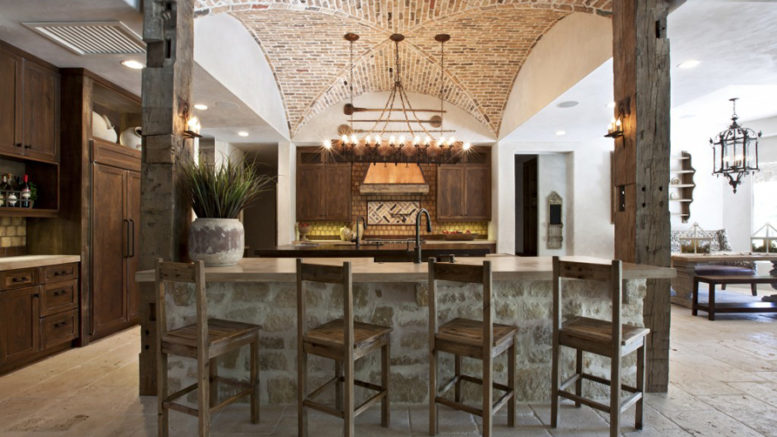Merola Tahamtan
Design Time
When people ask me where in the world I would want to travel, it’s so hard to decide. The south always comes to mind.The Middle East would be amazing to see. But I’ve always dreamed of visiting Italy with its stunning architecture and design, magnificent landscapes and mouth watering food and wine.
Tuscany is one of the largest regions in Italy, with many types of interiors ranging from the splendid palazzo or castles, to the sober interiors of stone farmhouses on the rolling countryside.
Like the name suggests, Tuscan interiors is a style that originated from Tuscany and uses warm colour tones and has immensely rustic appeal. The design uses simple designs using woods, limestone, clay, straw and cane. Colour schemes range from shades of white that reflects sunlight, the blues signifying the sky, deep reds, bright oranges and sunny yellow and soft greens that reflect the beautiful rolling meadows.
Nature’s amenities were used as valuable aspiratory sources and elements like stone, wood, and iron became trade marks for this decorating palette. One of the many reasons for choosing this style over others is that the interior spaces are extremely welcoming and cozy being bathed in natural sunlight and heat throughout the entire day. A rustic simplicity draws a familiar touch, combining comfortable pieces of furniture with natural colours and design elements.
Stone is used widely in Tuscan interiors as the medieval houses and farm houses dotting along the Tuscan landscape were all built of stone. Tuscans have a great respect for the past, and do not consider that all that is old should be discarded. Instead they cherish the vestiges of the past.
Many homes you will find an interior stone wall left to be seen. The walls, when needed, are repaired and are regarded as an important testimony to the efforts of past generations to build their futures with hard work and with faith in the benevolent forces of nature. There are stone walls in houses that date back two hundred years and that are retained as a central focus in home decorating solutions.
In many of the medieval homes, some of the older parts of the building were covered with plaster to meet a misconceived idea of “modernism.” Now the trend is to uncover the old parts. You can now find splendid old brick arches or window frames emerging from plaster walls.
Although not all homes have the fortunate design of having vestiges of the distant past, you can still incorporate the use of stone around a fireplace or walls in living or bedrooms, or in a country kitchen.
Texture is an important aspect of Tuscan interior design. The appearance of many layers of paint, cracked stucco or marble walls, and worn furniture are used to add an Old World charm to the room. Wood grain and texture are highlighted, as well as any cracks or crevices. Irregularity is used to add interest and warmth.
Ceramic tile and clay tile is widely used as flooring in Tuscan design. They evoke the past, and are available in a wide range of natural tones, ranging from the dusty brown to leather-like red hues. There are also tiles with antique finish and tiles that have the chips and irregularities caused by time.
Furniture used in Tuscan style interiors draws heavily on the past. This doesn’t mean you have to have a home filled with antiques. Rather use furniture that has been constructed using criteria of the past, although a few period pieces are always well presented.
Tuscany furniture inspired by tradition continues to be manufactured by present-day artisans who take pride in replicating the styles of the past. The woods are normally oak, chestnut, or cherry, and they are usually characterized by a dull wax finish. You will see natural coloured pieces that have darkened over time and usage.
Black wrought iron is usually found in every room in Tuscan-inspired homes. Iron scrolled plate racks may be found on kitchen and dining room walls. Large, elaborately carved black wrought iron light fixtures may hang above dining tables as well as in bedrooms. Many of these lighting designs feature many light that look like candles and each light often has a tiny cloth lampshade covering the top.
When remodeling kitchens, take into account that a genuine Tuscan cooking area is all about food, wine, and natural elements. Therefore, place a long wooden table, cabinets and shelves for wine bottles, glass jar filled with pasta and olives and don’t forget flower vases. Emphasize the rustic atmosphere with fruit hampers, garlic and pepper ropes, and add colour with majolica dishes.
The use of natural colours is a feature in Tuscan decorating schemes. All of the colours used evoke images of the harmony of the home in relation to nature. Starting with the colours used for the walls, these are normally a stark white that make a wonderful contracting background to the other rich woods of the furniture or to the stone accents. Other colours that are often used in more sophisticated decorating solutions are tones of burnished orange or light terra cotta. These colours recall the earth of the Tuscan hills and they compliment the rich tones of wood.
Designing your home in the Tuscan style is both challenging and entertaining. If you remember the basic rule of bringing nature into your home by using stone, wood, water and specific colours, the result will be an authentic warm and peaceful Tuscan design for your home.
Merola Tahamtan is an Interior Stylist in Home & Business Design, Home Staging, Painting, and Window Draperies. 613-561-0244 or merolatahamtandesigns@live.ca.

